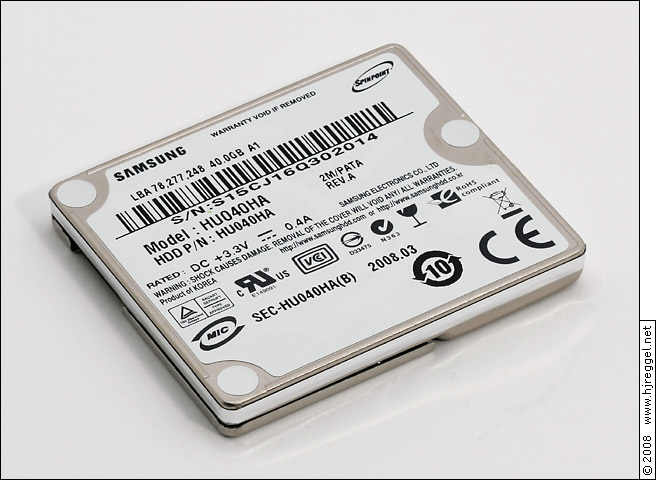
For other manufacturers, see the Microdrive History .
In 2008, Samsung revived the Microdrive form factor of 42.8 × 36.4 × 5.0 mm³. Since they did not start with a CF-II base design, they did not have to deal with guiding notches (at least 2mm of the long edge) and a large connector (at least 5mm of the short edge), and could use the full space instead. That gave enough space to use a 1.3" platter instead of a 1" platter. Together with the progress in perpendicular recording, and by storing two logical sectors in one physical sector to save a little header and gap space, they were able to squeeze in 40GB, where previous generations from other manufacturers stopped at 12GB.
With two capacities, three different interfaces, and one special configuraton, there are seven different models available:
Quick links: Harddisk · Performance · Enclosure
The Samsung SpingPoint A1 HU040HA is the 40GB model with 1024 bytes per sector and PATA ZIF connector. The disk is supposed to translate the physical sector size of 1024 bytes to a logical sector size of 512 bytes per sector. This affects the write performance of applications that write single 512-byte chunks, or unaligned writes, where, for example, one cluster starts at an odd address so that there are two half-sector writes involved.
The measured dimensions are 43.0 × 36.5 × 5.3 mm³, where the measured thickness includes all labels and stickers.
The harddisk identifies as "SAMSUNG HU040HA", firmware 4BP10000. The label claims 78,277,248 sectors, but the disk reports a size of 40,060,403,712 Bytes (37.3GB) equal to only 78,242,976 sectors. The disk supports ATA modes up to PIO-4, MDMA-2 and UDMA-5.
 | |
| Samsung SpinPoint A1 HU040HA |
The bottom view shows that the drive electronics is located outside, with spindle and actuator taking up the full height.
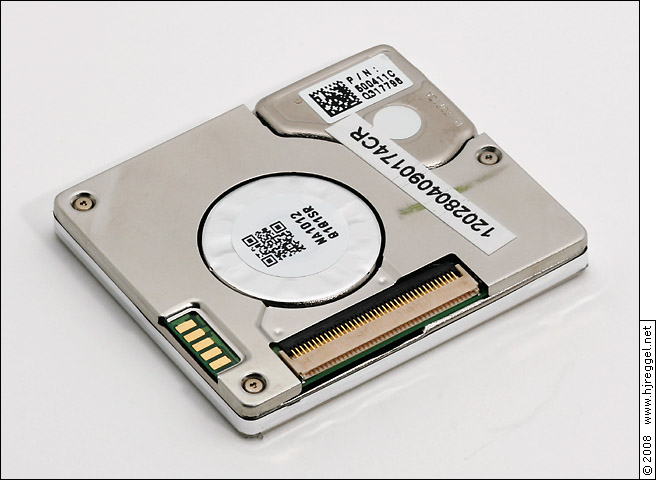 | |
| Samsung SpinPoint A1 HU040HA |
At the left you can see the USB connector for the models with native USB support, at the right you can see the 40-pin ATA connector. The ZIF socket is mounted in the correct orientation, it's just an unusual type with the hinge at the opposite side.
Important Note: The disk firmware for the 512 bytes per sector to 1024 bytes per sector mapping is patched for odd sector numbers, because with the factory formatting, the start of the data area (Cluster 2) is at an odd sector number. They could have patched the filesystem layout to move the start to an even sector number instead, but this would have required special formatting tools whenever the disk is re-formatted. This means that benchmark tools starting at sector 0 will report a write rate of 1-2 MB/s, but actual write performance through the filesystem will be at the proper speed.
Below is the write/read diagram taken through a ZIF-ATA adapter on the ICH6R with an offset of 512 Bytes.
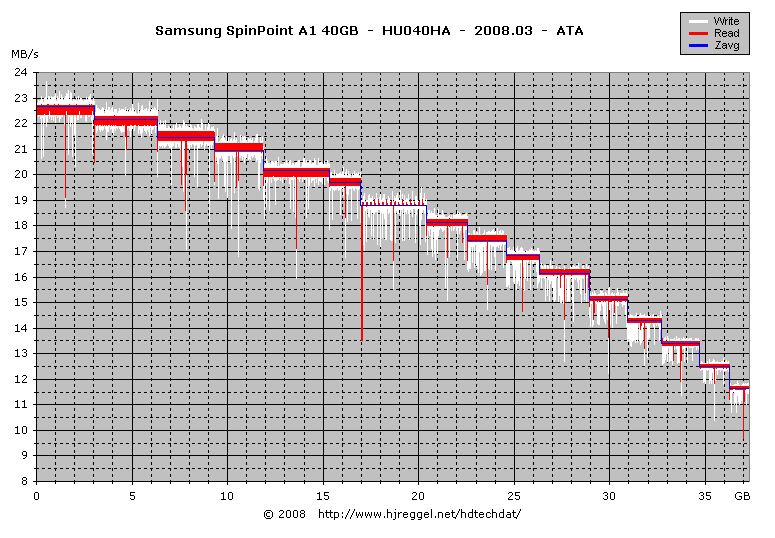
Below is the write/read diagram taken through the NEC µPD720133GB PATA to USB 2.0 bridge from the Lacie box, starting at Sector 1.
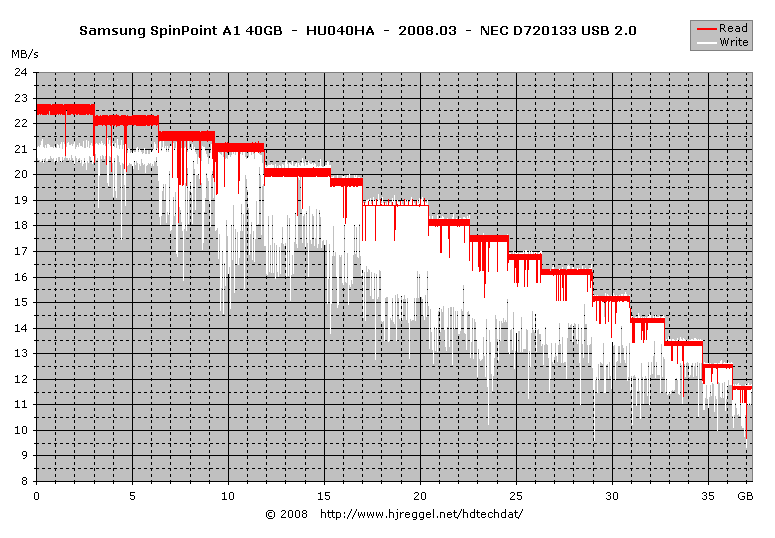
The read performance is excellent with distinct and clean media zones. The 21MB/s write during the first two media zones are most likely limited by the PATA to USB bridge. The rest of the write is influenced by timing problems, but still OK.
Below is the write/read diagram taken through a GL811S PATA to USB bridge. In that case, writing throug the USB bridge seems to be maxed out at about 20MB/s, regular write performance starts with the sixth media zone. From the sixth zone on, the diagram is cleaner than with the NEC bridge, indicating that the Genesys chip introduces less delay.
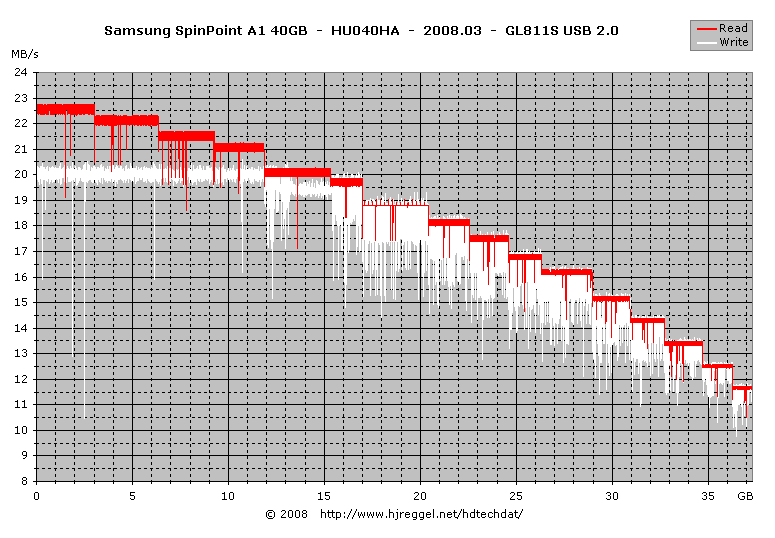
If you run benchmarking software that starts at sector 0, you will force the disk into unaligned read and write due to the mapping from 1024 Bytes physical sector size to 512 Bytes logical sector size. You will get something like this.
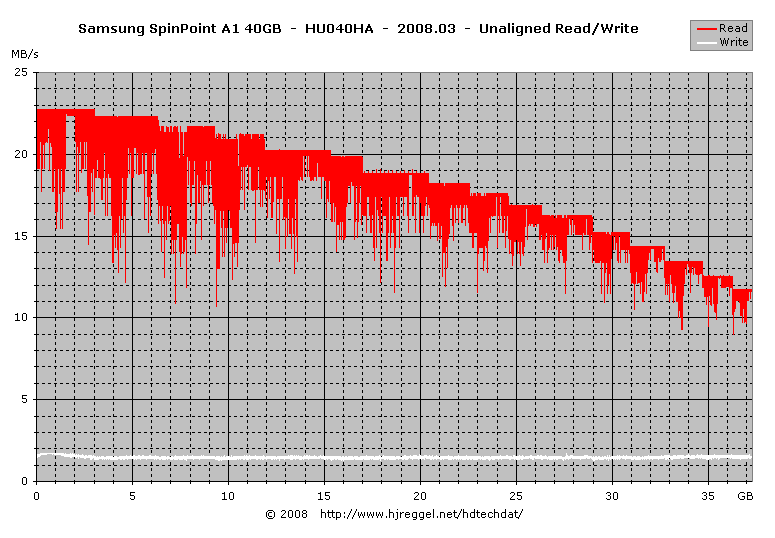
The read rate is also affected, but not that much. Unaligned read usually only kicks in across head and track boundaries. Unaligned writes ar worse, because writing a "half-sector" requires reading out that sector first, combining the data, and writing back the full sector. Cache can compensate a little by combining consecutive unaligned writes, but at least the first and last sector of a sequence of unaligned writes must be handled special.
The harddisk is actually from a LaCie little disk Mini Portable Storage, that I would call a masterpiece of product design failure: The box of 68.2 × 44.1 × 18.0mm³ is about 7× the volume of the bare disk, and uses the PATA version of the disk with PATA to USB PCB (NEC µPD720133GB), although Samsung also offers models with native USB support. I can't see any reason why a manufacturer would add so much cost to a product, unless the native USB interface would have some serious bandwith limitation or compatiblity issues.
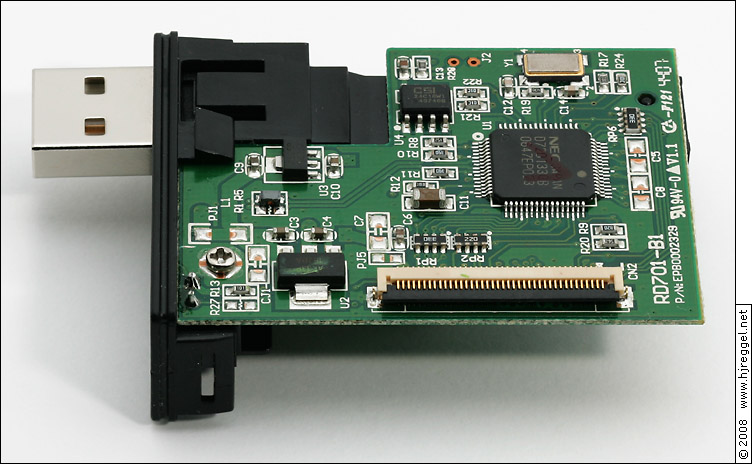 | |
| PCB with PATA to USB bridge |
Above you can see the usual type of ZIF socket, where the hinge is at the cable side.
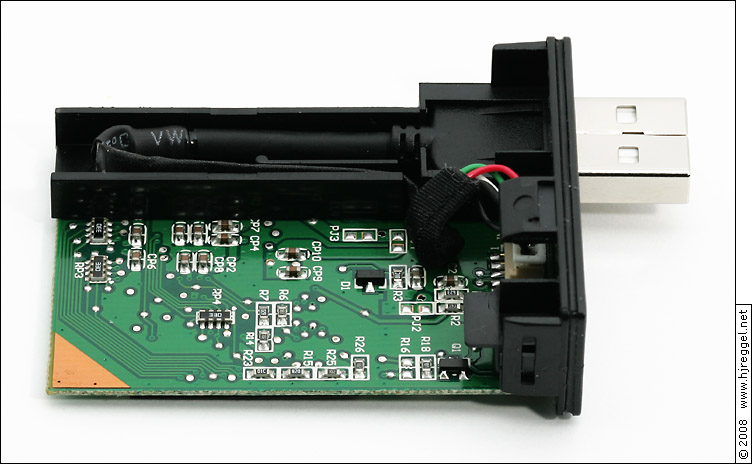 | |
| Retractable USB cable |
The USB plug sticks out the usual 12mm. In case the area around the USB socket does not allow direct plugging, the USB plug can be extracted by additional 31mm. The harddisk sits on top of the USB plug layer, the rest of that layer is empty space!
The Samsung SpinPoint A1 30GB HU035HA is the model with 512 bytes per sector, and has no problems with read or write alignment.
Quick links: Harddisk · Performance
The harddisk identifies as "SAMSUNG HU035HA", firmware 4CP10000. In this case, the stated count of 58,633,344 sectors is right, the disk reports 30,020,272,128 Bytes (27.95GB) available. The disk supports ATA modes up to PIO-4, MDMA-2 and UDMA-5.
 | |
| Samsung SpinPoint A1 HU035HA |
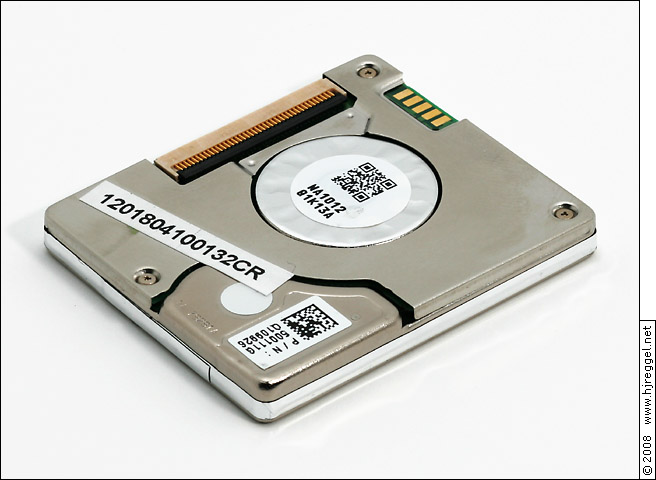 | |
| Samsung SpinPoint A1 HU035HA |
Below is the write/read diagram taken through a ZIF-ATA adapter on the ICH6R. The result is almost identical to the result through the USB bridge.
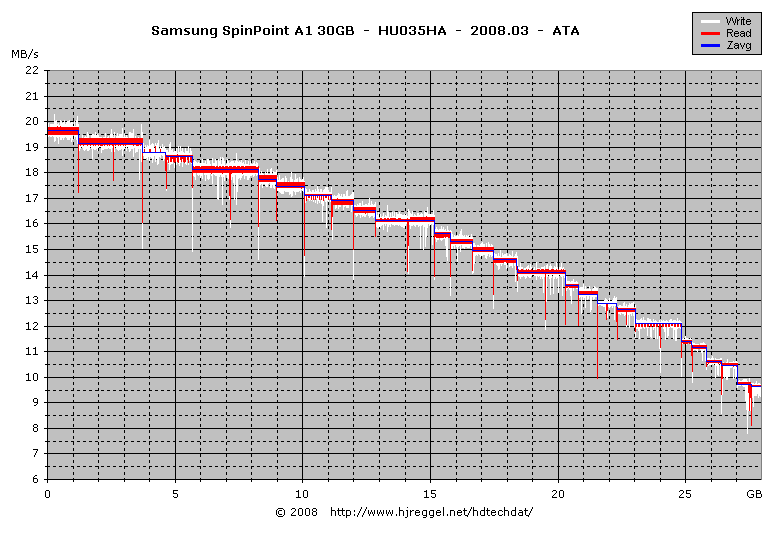
Below is the write/read diagram taken through the NEC µPD720133GB PATA to USB 2.0 bridge from the Lacie box, starting at Sector 0. The 512 bytes per sector model has a much cleaner write graph. Due to the lower density, the average sustained read rate of 15.04MB/s is about 2.7MB/s lower than for the higher density 40GB model.
